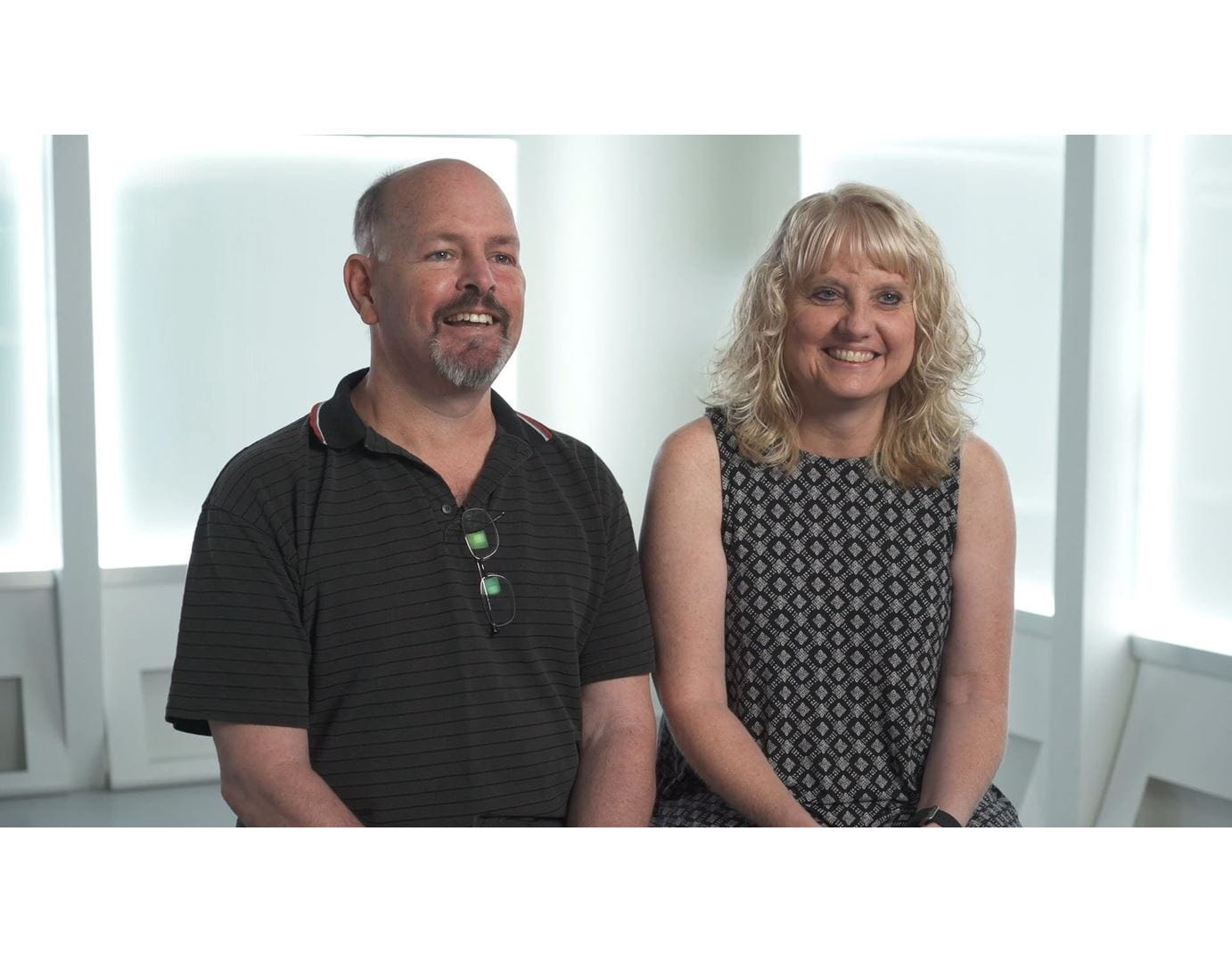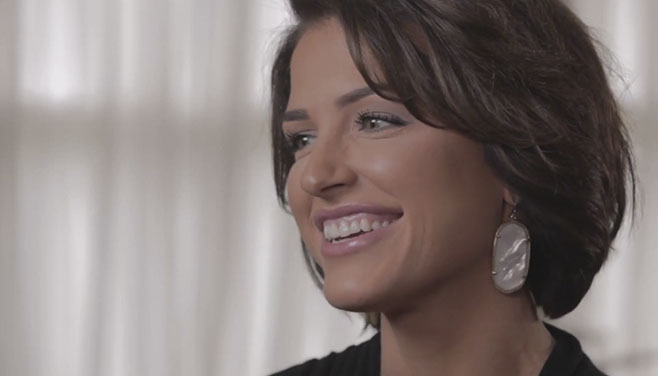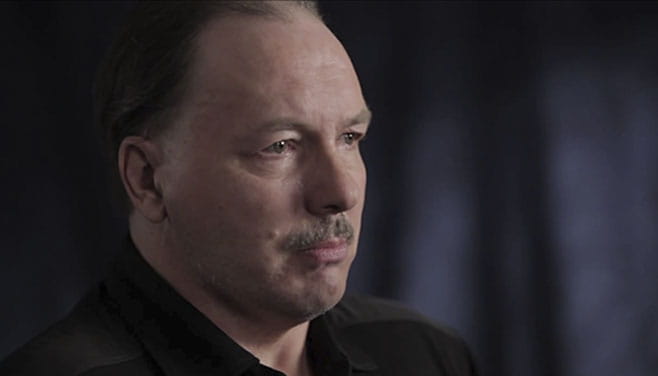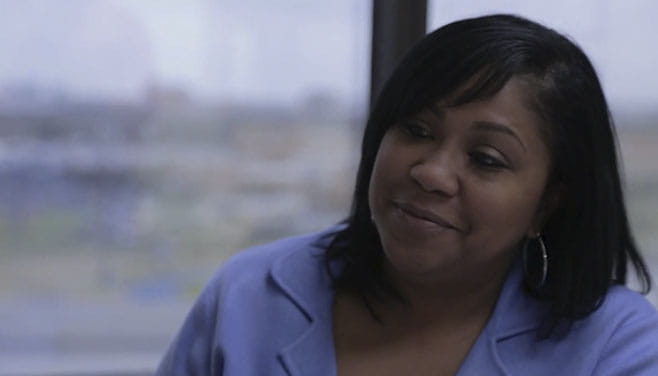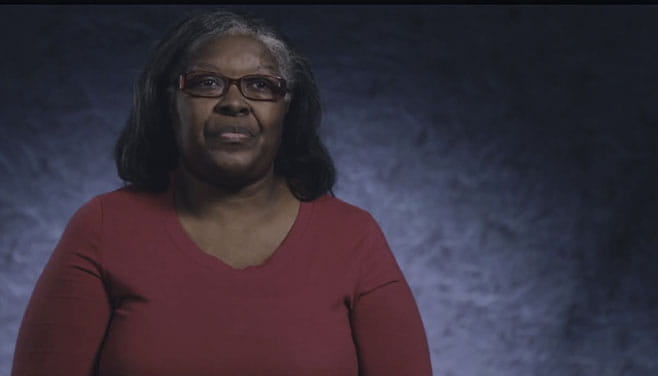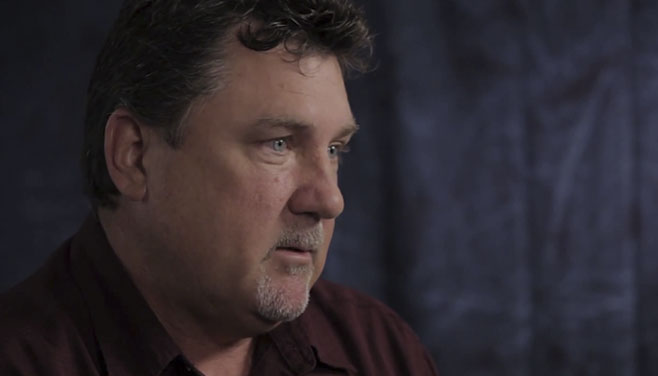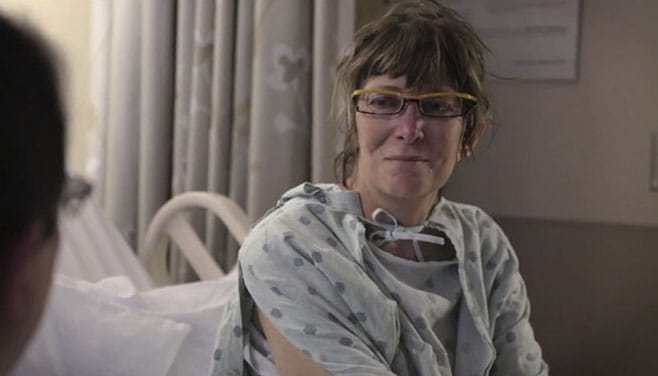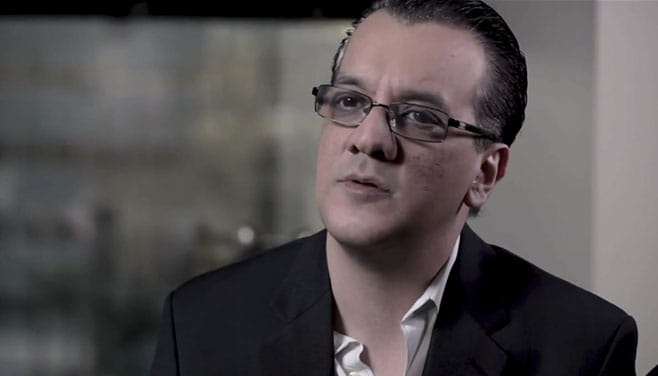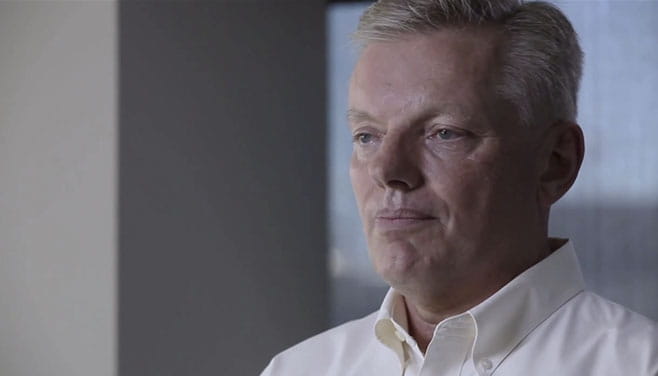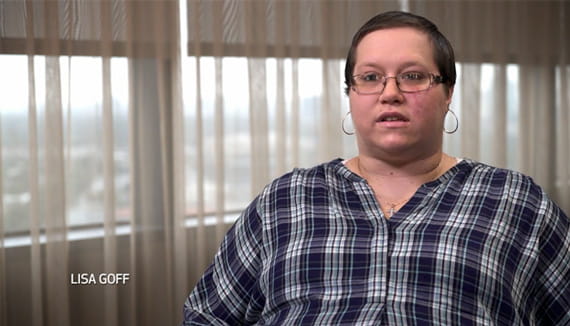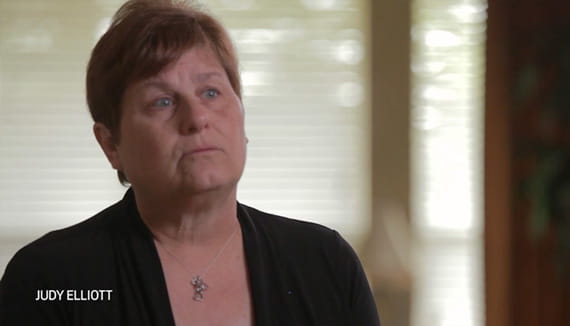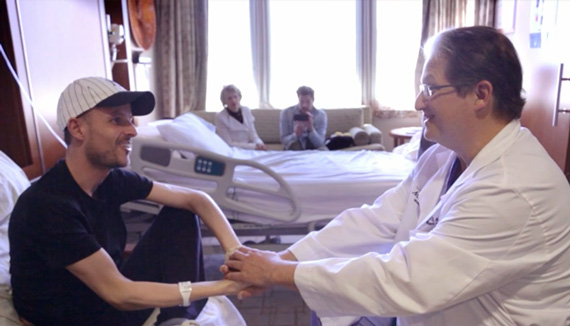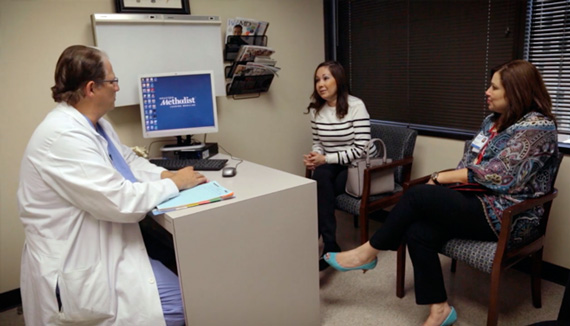Brain Tumor Patient Stories
Click to request an appointment or call 713.441.3802
Find a Brain Tumor Specialist Near You
Watch first-hand stories of how Houston Methodist brain tumor experts save patients’ lives and restore families’ hope for the future.
Patients are the heart and soul of Houston Methodist’s leading-edge brain tumor program. Every innovative diagnosis, treatment and procedure revolves around giving patients and their families the chance to keep writing their life stories.
Here are a few videos of our remarkable patients’ experiences before, during and after brain tumor care at Houston Methodist.
Here are a few videos of our remarkable patients’ experiences before, during and after brain tumor care at Houston Methodist.
Novel Gene Therapy Eliminates Aggressive Glioblastoma
Ed McCumber’s grade 4 glioblastoma was so malignant and aggressive that it grew back in a matter of weeks — twice. He turned to Houston Methodist for a second opinion. He was treated with a combination of advanced surgery and novel gene therapy invented at Houston Methodist. When Ed returned for a follow-up appointment six months later, the tumor was completely gone. More than a year after treatment, he remained cancer-free.
Pituitary Tumor Surgery Saves Patient’s Eyesight
Despite early treatments, Emily Schupp's pituitary tumor continued to grow and was nearing her optic nerve. The tumor was also causing her pituitary to make too much prolactin. She was at risk of it affecting her vision and eliminating her chances of becoming pregnant. Emily received minimally invasive endoscopic surgery. Her follow-up appointment showed the tumor was gone and her prolactin levels were back to normal. Surgery saved Emily’s eyesight and restored her hope to start a family.
Minimally Invasive Tumor Surgery Removes Giant Meningioma Causing Paralysis
Kristen Daniell's migraine headaches were getting worse, and she began to experience paralysis on the right side of her body. Imaging exams revealed a large meningioma the size of a tennis ball on the top left side of her brain. Kristen turned to Houston Methodist for minimally invasive brain tumor surgery. The tumor was removed using tiny tools and ultrasonography virtual reality. Her follow-up MRI confirmed that the tumor was gone. Kristen made a full recovery — plus she no longer has migraines.
How a Second Opinion and Novel Gene Therapy Offered Hope
Matt Futer’s glioblastoma tumor was in the speech and logic center of his brain, so he could only have part of it removed. His case was extraordinarily challenging. His original physician told him, “That’s it. Half your brain is cancer.” Matt sought out Houston Methodist for a second opinion, where he was treated with a specialized form of novel gene therapy. Seven years later, he remained alive and well.
Eyesight Saved by Pituitary Tumor Surgery and Advanced Technologies
Marcie Lester had a large pituitary tumor in an area important to brain function and vision. It was pressing on her optic nerve, putting Marcie at risk for blindness. High-resolution 3D microscopes and minimally invasive endoscopic surgery helped Houston Methodist neurosurgeons safely remove the tumor without tearing any arteries and save her vision.
Large Pituitary Tumor Removed Using Advanced Nonsurgical Endoscopy and Radiation
Belinda Amboree’s large pituitary tumor was pressing against her optic nerve and causing nearly complete blindness. Neurosurgeons were able to remove 90.95% of Belinda’s tumor with minimally invasive endoscopic surgery. Radiation oncologists then treated the remaining portion of the tumor with precise imaging technologies, sparing brain function and restoring her vision.
Patient Survives Large Pituitary Tumor Mistaken as Sinus Infection
Jed Duplantis originally thought he just had a sinus infection until vision problems prompted him to see his doctor. Imaging revealed a large pituitary tumor pressing on his optic nerve. Advances in camera technology revolutionized his treatment options. By using an endoscope, neurosurgeons successfully removed the tumor without even making an incision. Jed had a quick recovery and was soon after able to resume his normal life.
Patient Awake and Alert During Craniotomy
Imaging revealed a tumor in a vital area in Nancy Green's brain that controls speech and word interpretation. Neurosurgeon David Baskin, MD, used advanced imaging and virtual reality technology to map a safe surgical path through the vision, motor and sensory tracts of Nancy’s brain. Then a team of neurosurgeons performed an awake craniotomy, where Nancy verified the mapped surgical path by reading and speaking with anesthesiologists throughout surgery.
Orthopedic Surgeon’s Vision Restored After Pituitary Tumor Removed
Orthopedic surgeon Wayne Johnson, MD, realized something was wrong when he began experiencing headaches and vision loss. Imaging revealed a large pituitary adenoma pressing against his optic nerve and main arteries. After extensive research, Dr. Johnson chose Houston Methodist to treat his tumor. Dr. Johnson had minimally invasive endonasal endoscopic surgery, after which, his vision was restored and headaches minimized. Follow-up appointments revealed the tumor was completely gone.
Patient’s Tumor-Growing Genetic Disorder Treated with Expertise and Advanced Technology
Adnand Mirz’s genetic condition repeatedly caused tumors to form on nerve tissue anywhere in the body, including the brain and spine. On four separate occasions, one of the tumors became so bad it caused loss of function. Each time, the tumor was treated, and function was restored. Houston Methodist neurosurgeon David Baskin, MD, has been treating Adnand’s neurofibromatosis for more than 20 years. Adnand and his family consider Dr. Baskin and his team as members of their family.
Giant Schwannoma Tumor Removed During Complex Surgery
Doug Wood’s bicycle injury revealed a giant schwannoma tumor severely compressing the top of his spinal cord and base of his brain. Doug and his wife interviewed multiple doctors and ultimately placed their trust in Houston Methodist. The tumor was vascular, bleeding excessively. The tumor required an extremely delicate surgery where neurosurgeons worked millimeter by millimeter to completely remove it. As a result, Doug’s spinal cord was preserved, and he suffered no paralysis. By his six-week visit, he had recovered fully.
Motor Function Restored After a Second Opinion and Brain Tumor Surgery
Lisa Goff experienced a seizure at work and her visit to the ER revealed a very large mass in the area of her brain controlling motor function. She was told her tumor was inoperable. Lisa and her mother conducted research and chose Houston Methodist for a second opinion. It was a formidable challenge, but specialists crafted a comprehensive plan to remove Lisa’s tumor. Using minimally invasive surgery, neurosurgeons completely removed Lisa’s tumor and eventually her motor function was restored.
Brain Tumor Causing Memory and Vision Issues Treated with Advanced Surgery
Judy Elliot began having short-term memory problems, and her family doctor gave her medication for ADHD. After a suspicious peripheral vision test, she was referred to see a neurologist. Judy’s research led her to Houston Methodist, where imaging revealed a large tumor pressing on important structures within her brain, distorting her brain function. Neurosurgeons performed advanced surgery to remove the tumor, successfully restoring Judy’s brain function.
Complex Surgery Removed Tumor Pressing on Spinal Cord and Causing Paralysis
When Santiago Quizanos was 18 years old, he was diagnosed with cancer on his left clavicle. It was Ewing’s sarcoma, a rare cancer that is very difficult to combat. Santiago fought that cancer for 12 years, undergoing numerous operations. Then, a tumor pressing on his spinal cord completely paralyzed him for more than 24 hours. Santiago placed his trust in neurosurgeons at Houston Methodist to safely remove the tumor and decompress his spinal cord. After the surgery, he was able to move his legs and begin to walk again.
Benign Brain Tumor at Base of Skull Removed after a Second Opinion
Text: Marna Gonzalez de Garza was healthy, until one day while sleeping she experienced a convulsion. An MRI revealed a benign brain tumor at the base of her skull that she was told was virtually inoperable. She sought out a second opinion and selected Houston Methodist. The position of the tumor required a delicate approach to surgery, or she might never walk or talk again. Neurosurgeons used a virtual reality navigating system to guide the meticulous surgery, and Marna’s tumor was safely removed.
Choose a Doctor at One of Our Locations
FILTERS:
Clear All Filters

